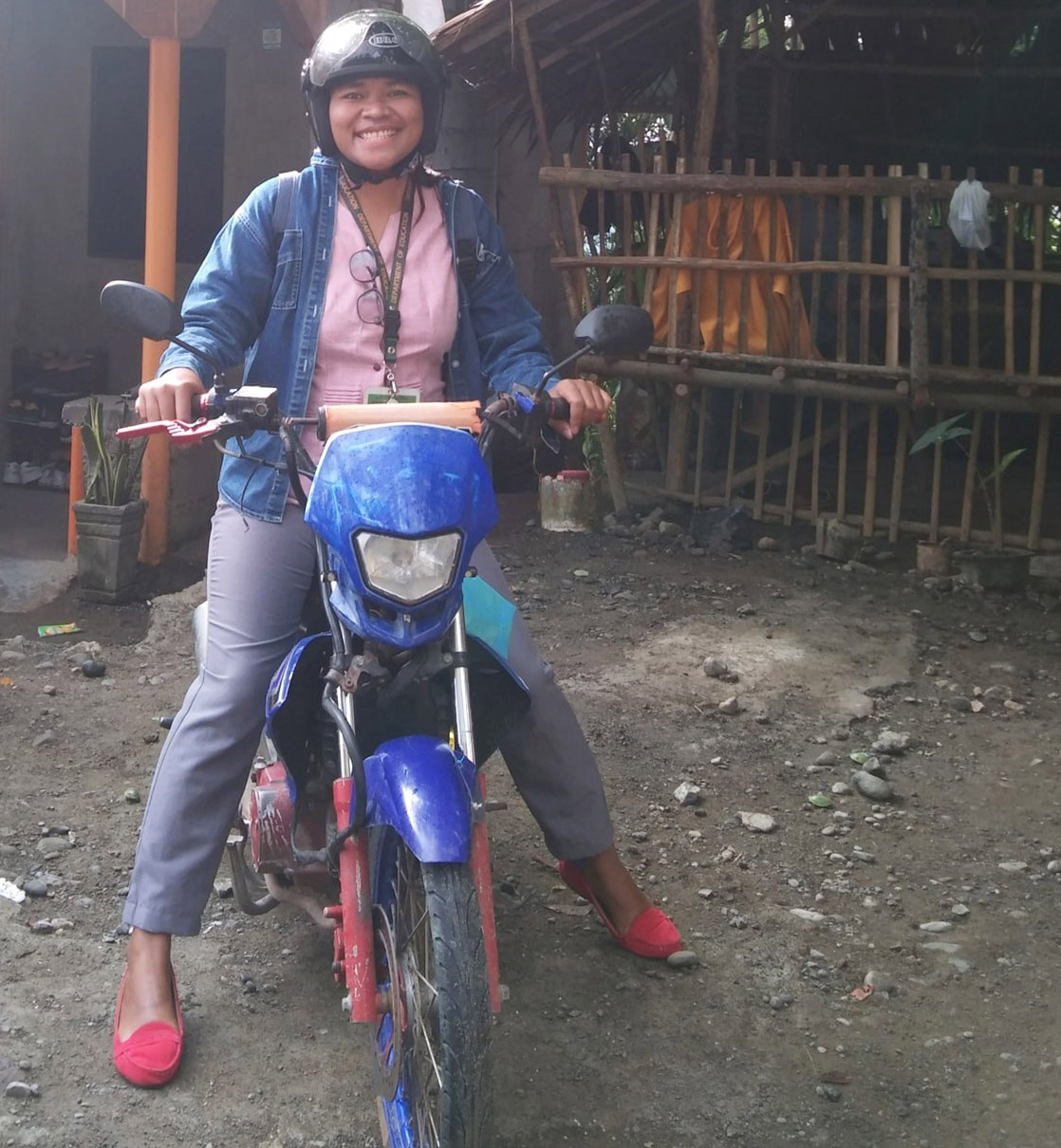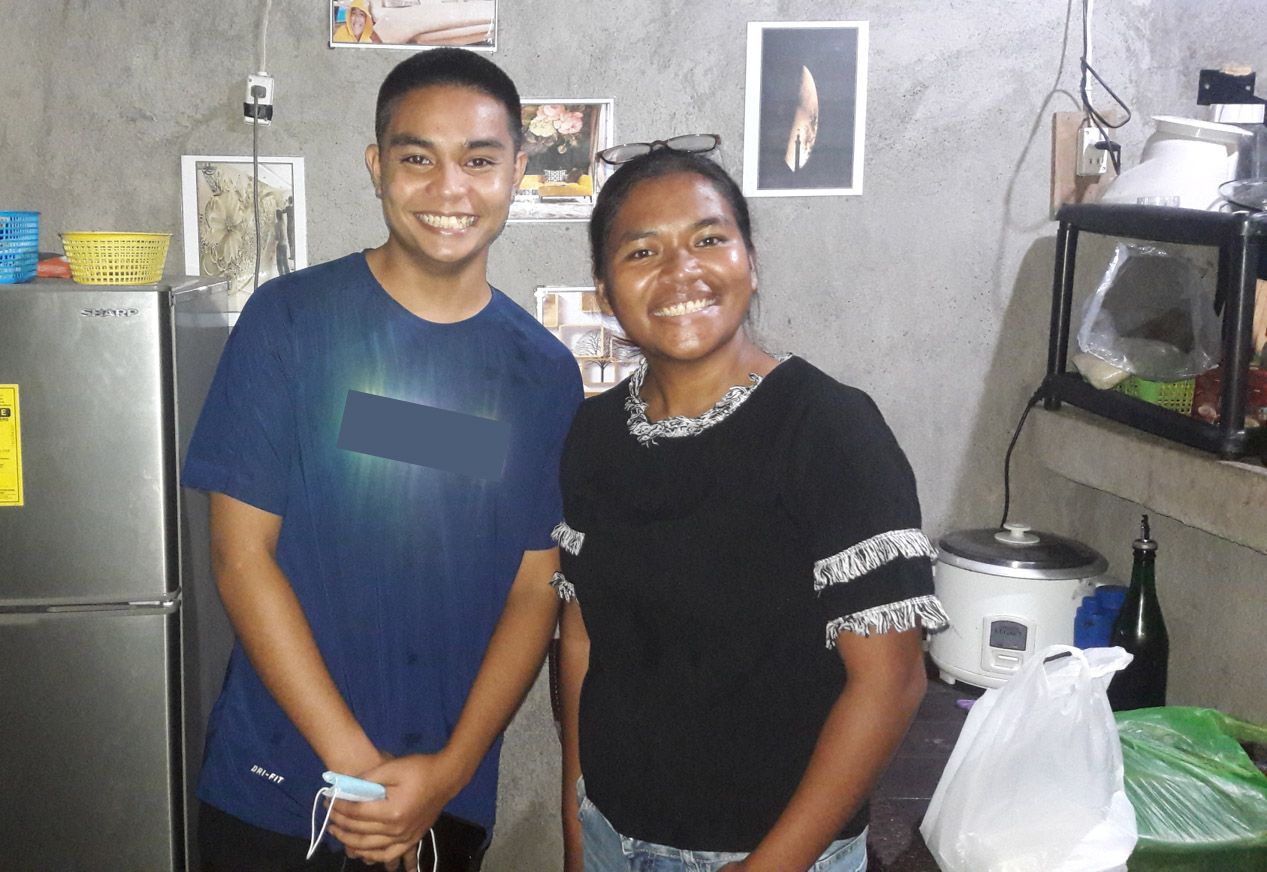FACES AND VOICES OF COVID-19
By Karl P. Quilal-lan
TALAINGOD, Davao del Norte (MindaNews / 25 September) – The adoption by the Department of Education (DepEd) of the modular distance-learning approach in places like Sitio Igang in Brgy. Sto. Niño in Talaingod, Davao del Norte, where online classes are impossible, has worsened the difficulties of learners.
This is how Bernalin Mansiwagan, a 28-year-old teacher of the Ata Manobo tribe, assessed the method used in many areas in response to the COVID-19 pandemic.
“Naglisod naman gani kaayo ang mga bata tong F-to-F pa,” she said, “unsa nalang kaha karon? Karon nga papel ra’y nasa atubangan sa bata, wala’y madungog, wala’y makita’g masundog sa atubangan” (The children had serious difficulties even when it was still face-to-face, how much more these days? Now that there’s only papers in front of them, nothing to listen to, and nothing to observe and imitate in front of them).
Bernalin cited that these difficulties have existed since the construction of concrete schools. For one thing, she observed that such environments did not stimulate learning. Rather than welcome them, the walled classroom settings only confused the pupils.
“It’s not a place where they naturally position themselves, so it may not inspire motivation to learn,” she went on.
And that’s just when they stepped into the classroom. It got tougher when they were introduced to western learning concepts.
 Public school teacher Bernalin Mansiwagan drives a motorcycle to move around. MindaNews photo courtesy of KARL P. QUILAL-LAN
Public school teacher Bernalin Mansiwagan drives a motorcycle to move around. MindaNews photo courtesy of KARL P. QUILAL-LAN
“Yes, A is for apple,” Bernalin said, “but it doesn’t exist in our community. If only A was for Am-bō, then they would have known that it stood for rat, and the thought process could have been a foundation.”
As with the alphabet, it was so with numbers and arithmetic, symbols, and procedures. The objects and ideas used in their education compromised their cultural perceptions, philosophies, and practices. So, the essence of amplifying the learning process with examples and representations then became ineffective.
“The Ata Manobo children only attempt to learn when they feel that they are ready and when their parents could see that they are prepared for learning,” Bernalin noted.
“They observe their fathers hunting in the mountains. They watch their mothers craft liyangs (baskets). When they are ready, the children join their parents in their practice,” she added.
Now, imagine that context to today’s modular-learning approach.
The world they have known was not in harmony with the world being taught at school. “We needed a bridge!” Bernalin said. She believed that linking both worlds is the key to an encouraging educational experience. But she asserted that this must be a shared responsibility.
All must do their part. “Grabe na’g tinambling-tumbling ang mga maistra para makat-on lang ang mga bata,” she said, “pero naa gihapo’y kulang.” (The teachers are already exerting so much effort just so the children could learn, but there’s still something missing.)
Seeing that the adversities surfaced in the fundamental premises of learning, the sectors concerned responded by developing policies to contextualize indigenous peoples’ education and reconcile indigenous knowledge systems and practices (IKSPs) with contemporary educational principles. And although the process had been strenuous, this initiative has been extended in drafting today’s learning modules. Promoting IKSPs in the modular-learning approach was endeavored.
Bernalin was invited to be one of the writers of adaptations congruent with the Ata Manobo culture. Unfortunately, the efforts of validating these “localized” contents are yet to be implemented. She understood that while the intent is commendable, the delay due to the need for extensive scrutiny of the proposed materials cannot be ignored. And so the plight of the pupils persists.
“The responsibility of learning has now fallen solely on the pupils,” she said, “and it’s sad to know.”
In the interest of continuity in learning, distribution of materials continued. But the contents reflected in the learning modules of Sitio Igang’s Ata Manobo pupils remain identical to the standard materials utilized for all under DepEd. This meant that the difficulties experienced by the pupils before were not entirely addressed, just “reformatted” during the pandemic.
“But at least it’s already there,” Bernalin said, sounding optimistic.
Even though the modular approach in education delivery may have added insult to injury, she maintained that its implementation also produced potential recourses for the future of Ata Manobo education.
 The author, Karl P. Quilal-lan (L), with Bernalin Mansiwagan at her home in Purok Tibi-tibi, Barangay Sto. Niño in Talaingod, Davao del Norte. MindaNews photo courtesy of KARL P. QUILAL-LAN
The author, Karl P. Quilal-lan (L), with Bernalin Mansiwagan at her home in Purok Tibi-tibi, Barangay Sto. Niño in Talaingod, Davao del Norte. MindaNews photo courtesy of KARL P. QUILAL-LAN
With the printed learning materials and the availability of the “contextualized” educational content, learning and instruction may become a simple dash for the pupils and teachers in the eventual return to classroom settings. As the pupils advance in curriculum, this could revamp their learning expectations and reduce unfamiliarity, which the teachers previously considered a significant problem.
“This access to tangible references at home is a step forward towards building that bridge,” Bernalin said. Furthermore, the pandemic may have heralded a solution concerning the limitations of the teachers’ efforts in their pupils’ inclusive flourishing.
She said that unlike before, teachers and parents now hold a stronger relationship. In Sitio Igang, Fridays mark the school’s reception of filled-out learning modules and the release of fresh content to engross the pupils in the following week. And since elementary pupils are considered an at-risk population, parents were urged to claim and submit their children’s papers.
This regular interaction paved the way for the parents’ inclusion as stakeholders in their children’s education. Now, the parents are prompted to be actively present in their children’s progress. A connection much more comprehensive had transformed from what was then limited pupil-teacher interactivity. In this regard, Bernalin said that “this is a novelty for Ata Manobo parents here… but it is a good thing.”
Finally, to instill the teachers’ presence despite the distance, regular interventions and consultations have been implemented to aid Ata Manobo pupils who found it hard to keep up, like the “Gabay-Tinig” program in the school where Bernalin teaches.
She feels that this practice of not leaving a child behind could be replicated in the “face-to-face” approach to better cater to the needs of the pupils.
According to her, the Kapwa (togetherness) entitlement is alive after all, with the pandemic not reducing it to mere courtesy.
“It’s slowly coming together,” she said. “We’re getting there.” (Karl P. Quilal-lan for MindaNews)
